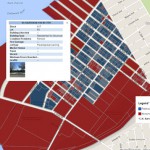Policy Series
“Hidden Hands: Property Ownership in Camden” A CURE Policy Brief on Understanding the use of LLCs by Investors
This report is the first of three in the “Hidden Hands” series and gives an overview of the research that has been done in this field before sharing some findings, including that there is a buyer that uses 19 LLCs to manage 512 properties within the City of Camden. Read the report here.
Past Research Projects
Student displacement, homelessness, and resilience in Camden City Schools
This project will report rates of homelessness by grade and school level and help support the CCS response. Individual level education data can help inform disparities between students who experience displacement, homelessness and more stably-housed peers on important indicators of school functioning like attendance, grades, test scores, and graduation rate. With the help of this data we can understand the degree to which displacement and homelessness contribute to other district priorities like truancy, drop outs, and trauma informed care. CURE affiliated scholars are working with CCS and CCHP to form an ongoing governance structure and sharing agreement for de-identified data from the ARISE integrated data system.
Objectives
- Understand the prevalence of displacement and homelessness among students in Camden City Schools (CCS) using routinely collected administrative records
- Generate actionable intelligence to help meet the needs of students from a resilienceperspective.
- Establish data sharing agreements and memoranda of understanding between Camden City Schools, The ARISE Project of the Camden Coalition of Healthcare Providers (CCHP), and Rutgers University-Camden
Understanding the Determinants of Concentration of Poverty: The Spatial Dynamics of Urban and Suburban Housing
In summer 2013, a groundbreaking report by the Center for Urban Research and Education (CURE) at Rutgers University–Camden and The Century Foundation revealed that concentrated poverty has increased by 50 percent since 2000, and more than 11 million Americans now reside in neighborhoods where at least two in every five households live below the poverty line.
While “The Architecture of Segregation” alarmed scholars and policymakers alike, little research has attempted to determine the root causes of this concentrated poverty – that is, until now.
Thanks to a $218,378 grant from the National Science Foundation’s Geography Spatial Sciences Program, CURE director Paul Jargowsky and Katrin Anacker of George Mason University will examine the determinants of the concentration of poverty – the extent to which the poor are isolated in high-poverty neighborhoods – with an emphasis on the role of public policies that shape metropolitan growth and development.
Hopeworks
 This research is based on an in-depth case study (Yin, 2009). The data collected from leadership, staff, and past and present program participants, along with secondary data relating to the organization are analyzed for themes and synthesized accordingly. Given the exploratory nature of this research, the resulting measurement and instrumentation are iterative and develop as data are collected. Data collection and analysis are closely linked and guided by initial concepts and developing understandings. In-depth, semi structured interviews are transcribed from digital audio into text by the researcher and analyzed via content analysis to explore responses in relation to other key data collected separately, such as organizational materials and historical data. All data are triangulated and culminate in a research report (forthcoming).
This research is based on an in-depth case study (Yin, 2009). The data collected from leadership, staff, and past and present program participants, along with secondary data relating to the organization are analyzed for themes and synthesized accordingly. Given the exploratory nature of this research, the resulting measurement and instrumentation are iterative and develop as data are collected. Data collection and analysis are closely linked and guided by initial concepts and developing understandings. In-depth, semi structured interviews are transcribed from digital audio into text by the researcher and analyzed via content analysis to explore responses in relation to other key data collected separately, such as organizational materials and historical data. All data are triangulated and culminate in a research report (forthcoming).
Objectives
- Evaluate the impact of a trauma-informed methodology / sanctuary approach adapted by the youth-centered nonprofit organization Hopeworks N Camden,
- Better understand how youth that experience chronic stress accumulated by living in high-poverty neighborhoods can be served effectively.
Neighborhood Change Study
 In collaboration with neighborhood-based organizations in Camden, a research team from the Center for Urban Research and Education (CURE) at Rutgers University in Camden has initiated a project to assess the social and economic impacts of changing real estate markets in Camden neighborhoods. The findings will be used to propose strategies for maximizing community benefits and reducing or eliminating community disadvantages associated with disinvestment and reinvestment in Camden’s neighborhoods.
In collaboration with neighborhood-based organizations in Camden, a research team from the Center for Urban Research and Education (CURE) at Rutgers University in Camden has initiated a project to assess the social and economic impacts of changing real estate markets in Camden neighborhoods. The findings will be used to propose strategies for maximizing community benefits and reducing or eliminating community disadvantages associated with disinvestment and reinvestment in Camden’s neighborhoods.
Objectives/Goals
- Document changes in neighborhood real estate markets, by conducting annual property inventories accompanied by an analysis of significant trends;
- Disseminate inventory data, including photographic images of individual properties, mapped data, and trend analyses in a readily accessible online format;
- Identify outcomes associated with housing, education, and employment associated with members of selected households that moved into subsidized and market-rate housing in these neighborhoods;
- Produce an annually updated report proposing public, institutional, and/or private investment strategies for promoting housing affordability, preventing displacement, and advancing human capital development in order to produce positive economic and social outcomes benefitting all residents of these neighborhoods.
